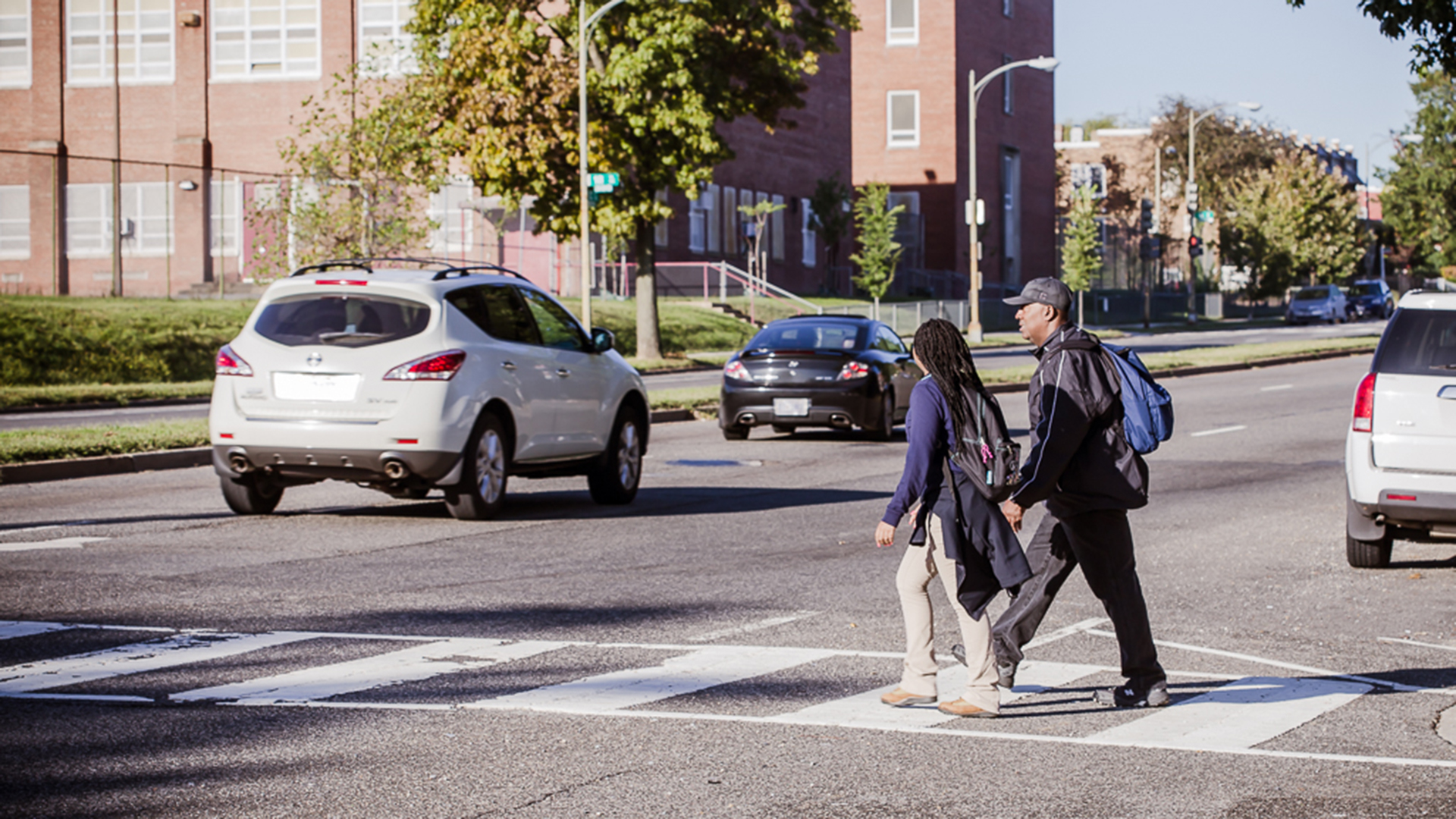February 27, 2021
This is one of five ideas we’re sharing for feedback as part of Kittelson’s Equity Challenge, an initiative to develop practical ways to advance equity in transportation. Learn more about the challenge and read the other ideas here.
Equity Challenge: Enforcement Tactics Disparately Impact People of Color
Enforcement has traditionally been considered one of four major components of transportation safety, alongside engineering, education, and emergency response. Enforcement is an accepted and in some cases required part of transportation safety planning.
However, enforcing the rules of the road is not a straightforward premise, and reexamination of our relationship with enforcement is overdue. Firstly, the agencies who plan, design, own, and operate the roadways typically are not the enforcing bodies. Secondly, available research indicates many common enforcement strategies provide temporal effects to change motorist behavior but may be ineffective in the long run to achieve desired outcomes (e.g., improved yielding to pedestrians, slower vehicle speeds). Lastly, enforcement has repeatedly been shown to reinforce or exacerbate existing racial inequities, with disproportionately negative impact on low-income and minority drivers. Armed law enforcement officers are given wide discretion, which invites bias in who gets stopped and how the stop results.

Enforcing the rules of the road is not a straightforward premise, and reexamination of our relationship with enforcement is overdue.
Idea: A Framework to Reexamine Enforcement
We see opportunity to develop a framework for reevaluating enforcement strategies from the transportation agency lens in planning and engineering stages. There is a need to gather information and have a clear method for comparing and presenting this information on enforcement and alternatives to enforcement. Our idea is a framework composed of five steps:
1. Frame the context. What is the transportation problem to be solved, and what is the distribution of harms? This tells us the magnitude of the issue being addressed and the need for interventions. It also establishes who is impacted if nothing is changed from “business as usual.”
2. Evaluate the strategy. Does enforcement address the root cause? Does it target the symptoms or the issue? For example, are people riding bicycles on the sidewalk because of unsafe roadway conditions? How does an enforcement strategy create or exacerbate inequities, and can they be mitigated?
3. Identify alternatives. What alternatives to enforcement are available? Are they effective, and do they fit community needs? What is the implementation time and cost of available alternatives?
4. Make a recommendation. Weigh the trade-offs based on the magnitude and distribution of benefits and costs and community input. Engage stakeholders and community with clear information so that a decision can be made collectively.
5. Choose a course of action. Proceed based on feedback in Step 4. If an enforcement strategy is effective and is warranted, prepare an implementation plan to mitigate and monitor negative impacts. If enforcement is inappropriate, proceed with the available suite of alternatives.
How This Will Benefit Our Clients & Communities
The framework has the potential to be a resource industry wide. With the promotion of interagency local roadway safety plans by FHWA nationwide (and as a stipulation for HSIP funding in California), public works departments and DOTs will be redoubling efforts to engage peer agencies and local stakeholders, including law enforcement agencies. We have the chance to help shape equitable transportation safety planning solutions that minimize harm to communities, use available resources judiciously, and demonstrate what true alternatives to enforcement look like. Apart from the recommendations identified in steps 4 and 5, there is benefit to “shining a light” on the distribution of benefits and harms of enforcement strategies and engaging the public in that conversation.
Whaddya Think?
We’d love to collaborate! Post your thoughts on this idea, or another idea for advancing equity in transportation, to social media with the hashtag #TransportationEquityChallenge.
We’d also welcome a conversation with you. Get in touch with us at malston@kittelson.com, agarbier@kittelson.com, eferguson@kittelson.com, and mbraughton@kittelson.com.
View the other ideas that came out of the Transportation Equity Challenge here.
